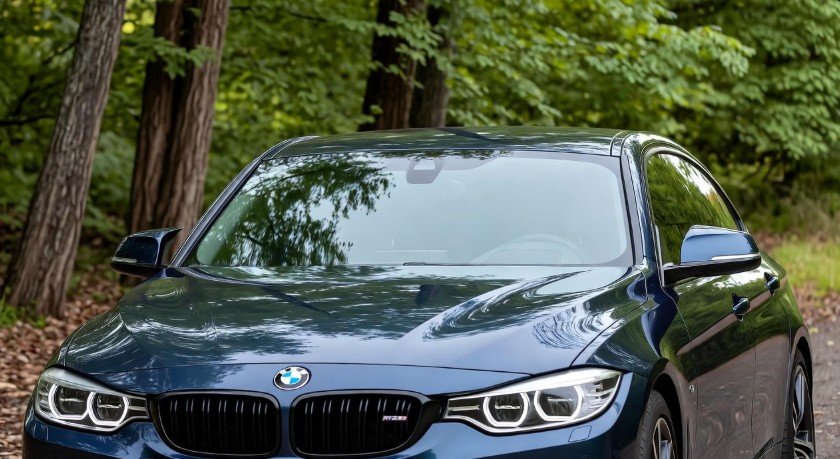How to Reset BMW Windows: Quick and Easy Fixes That Actually Work

Owning a BMW is often associated with luxury, comfort, and precision engineering. But sometimes, even the most refined cars face small hiccups — like power windows that suddenly stop functioning as they should. Maybe your BMW window won’t roll up, or perhaps the one-touch feature no longer responds. It’s frustrating, especially when you expect seamless performance. The good news? Resetting your BMW windows is far simpler than you might think.
Think of it like teaching your window where to stop and start again — just a little recalibration that brings everything back in sync. In this detailed guide, you’ll learn how to reset BMW windows using quick and easy steps. We’ll cover the reasons behind the malfunction, how to fix it without tools, and what to do if the issue persists.
Whether your car is a BMW 3 Series, X5, or 5 Series, this guide applies to most models with power windows. So, take a deep breath — let’s get your window gliding up and down like it’s brand new again.
In This Article
- 1 Understanding Why BMW Windows Need Resetting
- 2 Step 1: Start Your BMW and Power the System
- 3 Step 2: Roll the Window Down Completely
- 4 Step 3: Roll the Window Up Completely
- 5 Step 4: Test Your BMW Window Function
- 6 When Resetting BMW Windows Doesn’t Work
- 7 Why Window Resets Are Common After Battery Replacement
- 8 Signs Your BMW Window System Needs Professional Help
- 9 How to Troubleshoot Persistent BMW Window Problems
- 10 Preventive Maintenance Tips for BMW Window Longevity
- 11 The Role of BMW’s Anti-Pinch Feature
- 12 Real-Life Example: Resetting a BMW X5 Window
- 13 Pro Tips from Experienced BMW Owners
- 14 When to Visit a Professional Mechanic
- 15 FAQs: How to Reset BMW Windows – Quick and Easy Fixes
- 16 Conclusion: A Simple Reset, a Smoother Ride
Understanding Why BMW Windows Need Resetting

Before jumping into the reset process, it’s helpful to know why your BMW window may need it in the first place. Picture this: your car’s window mechanism works like a dancer following a rhythm. It knows when to stop, when to go down, and how to respond to the one-touch feature. But if there’s a sudden power loss, dead battery, or electrical glitch, that rhythm gets lost — the window “forgets” its range.
Common reasons your BMW window might need resetting include:
-
Battery replacement or disconnection: When you replace your BMW’s battery, it can cause the power windows to lose memory.
-
Electrical interruption: A sudden loss of power or a blown fuse may confuse the window control system.
-
Software glitch: BMW’s complex electrical systems occasionally face small electronic hiccups that affect window operation.
-
Manual interference: If someone manually tries to pull the window up or down when the power is off, it may throw off its calibration.
In simple terms, your BMW window reset isn’t a repair — it’s a “retraining session.” Once done correctly, it helps restore the smooth, automatic motion you expect.
Step 1: Start Your BMW and Power the System
Now that you know why resetting is necessary, it’s time to begin. The first step to reset BMW windows is straightforward — start your car. Turn the ignition key to the “on” position or press the start button if your vehicle has keyless ignition.
Starting the engine ensures that the power supply is stable and consistent throughout the reset. You don’t want to perform the process when the car’s electronics are half-awake. A low or inconsistent voltage can prevent the reset from working properly.
If you recently replaced or disconnected the battery, it’s also smart to wait a minute after starting your BMW. This gives the vehicle’s ECU (Electronic Control Unit) a moment to initialize all systems, including window controls.
Once the car is fully on, make sure all windows are closed before you begin. It’s best to start resetting each window one at a time.
Step 2: Roll the Window Down Completely
Next, locate the window switch for the window you want to reset — typically on the driver’s door panel. Press and hold the switch to roll the window all the way down. Don’t release the switch immediately when it reaches the bottom. Instead, hold it down for 10 seconds after it’s fully open.
Why hold the switch? Because this action allows your car’s system to “learn” where the bottom limit is. BMW’s power windows use sensors to detect end positions, and this helps recalibrate the window’s lower point.
Here’s a simple tip:
-
You might hear a small click or feel a subtle change in tension when the system registers the reset.
-
Don’t worry if it doesn’t happen on the first try — sometimes, it takes a few seconds longer depending on your model.
At this stage, the system now knows where “down” is. Next, you’ll need to teach it where “up” is.
Step 3: Roll the Window Up Completely
Once the window is fully down and you’ve held the button for about 10 seconds, start rolling it back up. Press and hold the switch until the window reaches the top position. Then, just like before, keep holding the switch for another 10 seconds even after it’s fully closed.
This step helps your BMW remember the top limit of the window’s travel. It’s like setting the final checkpoint in its range of motion. By doing this, you restore the automatic one-touch up and down feature that might have been lost.
If your window hesitates or moves unevenly, that’s okay. Sometimes, the first reset attempt helps realign the sensors. Repeat the same process once more if needed — down, hold, up, hold — and it should smooth out the motion.
You can think of this like resetting a phone or laptop after a software crash — simple but surprisingly effective.
Step 4: Test Your BMW Window Function
After both the up and down positions are recalibrated, it’s time to test your window’s functionality. This is the moment of truth. Try using the one-touch feature — press the switch once to lower or raise the window automatically.
If it rolls smoothly and stops correctly, congratulations — your BMW window reset worked perfectly!
However, if the automatic function still doesn’t engage, repeat the reset steps again. In some cases, especially after a full battery replacement, it might take two or three cycles for the system to “relearn” both end positions.
Here’s a quick checklist for testing:
-
Does the window respond immediately to the switch?
-
Does the one-touch feature work in both directions?
-
Does the window stop smoothly at the top and bottom without reversing?
If all answers are yes — your BMW is back to its luxurious, smooth self again.
When Resetting BMW Windows Doesn’t Work
Sometimes, even after multiple attempts, the window might still act stubborn. Maybe it rolls up halfway and then goes back down, or it doesn’t move at all. Don’t panic — this doesn’t necessarily mean something serious is wrong.
Here are some common issues and what they might mean:
| Issue | Possible Cause | Solution |
|---|---|---|
| Window rolls down automatically after closing | Obstruction detected or misaligned sensors | Inspect for debris or rubber misalignment and retry reset |
| Window doesn’t move at all | Faulty switch or damaged fuse | Check the fuse box and window switch for continuity |
| Window moves slowly or jerks | Dry window tracks or worn regulator | Lubricate tracks using silicone spray or replace regulator |
| Only one window misbehaves | Localized motor or control issue | Remove door panel to inspect motor connector |
In my personal experience, most BMW window issues come down to something minor — like a disconnected wire or a glitchy control module. I once spent an hour troubleshooting a “dead” window on a BMW X3, only to find that the fuse had popped during a battery jump-start. One simple fuse replacement and the reset worked instantly.
Why Window Resets Are Common After Battery Replacement
If your BMW recently had a battery replacement, and your window suddenly stopped working, you’re not alone. This is one of the most frequent causes for the need to reset BMW windows.
BMW’s electrical systems are highly intelligent — they manage everything from seat memory to climate control. But when you disconnect the battery, the system loses its “saved memory” for certain non-critical features like window calibration.
It’s similar to how a computer restarts after a power cut — everything works, but preferences like volume or brightness need to be reset.
That’s why every time you disconnect or replace your car’s battery, it’s a good habit to immediately reset your windows (and sometimes the sunroof too). Doing so ensures your comfort features, including the auto up/down window functions, are back in perfect sync.
Signs Your BMW Window System Needs Professional Help
If the reset process doesn’t resolve your problem, you may be dealing with an issue beyond calibration. In rare cases, BMW power window problems may stem from hardware faults like:
-
Worn-out window regulator — the mechanical part that moves the glass.
-
Burnt-out window motor — responsible for powering the movement.
-
Faulty comfort control module (CCM) — manages all window and locking functions.
-
Broken wiring in the door harness — often occurs due to repeated door opening and closing.
You can usually tell it’s a hardware issue if you hear grinding noises, see the glass move unevenly, or notice the switch feels unresponsive. In these cases, it’s best to visit a certified BMW technician or a reliable auto electrician.
How to Troubleshoot Persistent BMW Window Problems
Even after performing a proper reset, your BMW windows may occasionally still misbehave. Maybe one window refuses to respond, or it rolls up halfway before sliding back down again. This can be puzzling — but in most cases, the issue is still manageable with a few simple checks. Let’s go through the most common scenarios and how to troubleshoot them before running to the mechanic.
One of the first things to check is the fuse box. Each BMW model has a dedicated fuse for the power windows, and if that fuse blows, the system simply won’t respond. Consult your owner’s manual to locate the fuse panel (usually found in the glove compartment or trunk), and inspect the window fuse for any sign of burn or damage. Replacing it takes only a few seconds.
Another common culprit is the window switch itself. Dust or moisture can sometimes interfere with the switch’s contacts. Gently pry it up using a trim tool, disconnect the harness, and clean the connector using electronic cleaner spray. Once dry, reconnect it and test the switch again.
If these quick fixes fail, the problem might lie with the window regulator — the motorized component that moves the glass. Over time, its gears can wear out, especially in older BMW models like the E46 or E90 series. A clicking or grinding sound when pressing the switch often indicates this. At this point, replacing the regulator might be the only option.
Preventive Maintenance Tips for BMW Window Longevity
Once you’ve successfully performed your BMW window reset, it’s worth taking a few extra steps to keep your power windows functioning smoothly for years. Just like oil changes and brake checks, window maintenance should be part of your car care routine.
Here are a few proven tips:
-
Lubricate the window tracks: Every few months, spray a small amount of silicone-based lubricant into the window channels. This prevents friction and allows the glass to glide effortlessly.
-
Clean the rubber seals: Dust, pollen, and dirt can accumulate along the rubber lining. Use a damp microfiber cloth to wipe the seals clean. It prevents jamming and unwanted squeaks.
-
Avoid slamming the door: Hard door slams can shake the window mechanism, misaligning the regulator over time.
-
Operate windows regularly: If you rarely roll your windows down, the mechanism can stiffen. A quick open-close cycle every few days keeps the motor active.
-
Protect your car battery: A weak or fluctuating voltage can confuse the window memory. Keeping your battery healthy ensures consistent performance.
Think of your BMW’s windows like muscles — the more often you “exercise” them gently, the smoother they’ll stay.
The Role of BMW’s Anti-Pinch Feature
Modern BMW power windows are equipped with an advanced safety system known as the anti-pinch feature. This intelligent technology prevents the window from closing if it senses an obstruction — such as a hand, object, or even thick debris stuck in the seal.
While incredibly useful, this system can sometimes cause confusion after a reset. If the calibration is off, the sensor might falsely detect resistance and roll the window back down automatically.
If this happens repeatedly, try resetting the window again, paying special attention to the “hold” times at both the top and bottom positions. You can also clean the window tracks to remove any dirt that may be triggering the sensor.
If the issue persists even after several attempts, it might be worth disconnecting the battery for a few minutes and trying a full electrical reboot. This often clears lingering software glitches that interfere with the BMW window control module.
Real-Life Example: Resetting a BMW X5 Window
To make this more relatable, let’s consider a common real-world example. Imagine you’re driving a BMW X5, and after replacing the battery, you notice the driver’s window won’t go up automatically. You try holding the button, but it keeps stopping halfway.
Here’s how the fix typically goes:
-
Start your BMW and ensure the ignition is fully on.
-
Hold the switch to roll the window all the way down. Keep holding for about 10 seconds.
-
Then roll it up completely and hold the switch for another 10 seconds.
-
Release the button, then test the one-touch function.
In nearly all cases, this resets the system successfully. If it doesn’t, repeating the process once more usually does the trick.
Many BMW owners share similar experiences on car forums — proving that this simple reset technique is effective for models like the 3 Series, 5 Series, X3, X5, and even the newer G20 lineup.
Pro Tips from Experienced BMW Owners
After years of driving and maintaining BMWs, seasoned owners often develop their own small rituals to prevent window issues from recurring. Here are some shared wisdoms from that community:
-
Never reset with a weak battery: Always ensure the voltage is stable before starting the process. BMW’s electronic systems are sensitive, and low voltage can cause incomplete resets.
-
Avoid forcing the switch: If a window feels stuck, don’t press the button repeatedly in frustration — this can burn the motor or jam the regulator.
-
Disconnect battery only when necessary: Frequent disconnections can cause recurring calibration loss for not just windows, but mirrors and sunroofs too.
-
Keep your car software updated: BMW often releases firmware updates that improve system stability, including power window control.
These small habits can make a big difference. They don’t take much effort but help your car maintain that “just rolled out of the showroom” feel.
When to Visit a Professional Mechanic
As much as we’d all love to fix everything ourselves, sometimes it’s best to let the experts handle it. If you’ve tried resetting your BMW windows multiple times with no success, or if the window refuses to move at all, it’s time to book a visit to a certified BMW service center.
A mechanic will use diagnostic tools to read fault codes from the body control module (BCM). This scan can reveal whether the problem is electrical (such as a sensor failure) or mechanical (like a damaged regulator). In many cases, the technician can reset or reprogram the window module using BMW’s ISTA software — something that’s not accessible to most car owners.
It’s also worth noting that neglecting the issue can cause bigger problems later, such as draining your battery if the window module keeps trying to recalibrate itself. So if you’ve exhausted all home fixes, getting professional help is the smart move.
FAQs: How to Reset BMW Windows – Quick and Easy Fixes
1. How do I reset my BMW windows after replacing the battery?
Start your car, roll the window down fully, hold the switch for 10 seconds, then roll it up and hold again for 10 seconds. Test the one-touch function to confirm.
2. Why are my BMW windows not rolling up properly?
It could be due to a lost calibration, debris in the tracks, or a weak motor. Performing a reset usually solves the issue.
3. My BMW window rolls down automatically after closing — what should I do?
That’s often caused by the anti-pinch system detecting resistance. Try cleaning the tracks and repeating the reset process.
4. Can I reset BMW windows without starting the engine?
It’s recommended to keep the ignition on or engine running during the process to ensure full electrical power.
5. Do I need any special tools to reset BMW windows?
No tools are required. You can perform the entire reset using only the window switch on the door panel.
6. How often should I reset my BMW windows?
Only reset when necessary — typically after a battery disconnection or if the window stops responding to the one-touch feature.
7. Is it safe to reset all windows at once?
Yes, but it’s best to reset each window individually for accurate calibration.
8. What if none of my BMW windows work at all?
Check the fuse, battery connection, and switches. If still unresponsive, consult a BMW technician for a diagnostic check.
Conclusion: A Simple Reset, a Smoother Ride
At the end of the day, resetting BMW windows is one of the simplest yet most effective fixes you can perform yourself. Whether your window stopped working after a battery change or it’s just behaving oddly, this quick recalibration process can restore full functionality in minutes.
The trick lies in being patient — hold the switches as instructed, test thoroughly, and repeat if necessary. It’s a small effort that brings back a big sense of comfort and convenience.
By maintaining clean window seals, lubricating tracks, and keeping your electrical system healthy, you’ll prevent most of these issues from returning. And if things ever go beyond a DIY fix, remember that BMW-certified technicians are always there to help.
So next time your BMW window gets stuck, don’t stress — you already know how to handle it like a pro. Reset, test, and roll down the road with that signature smooth BMW confidence once again.






